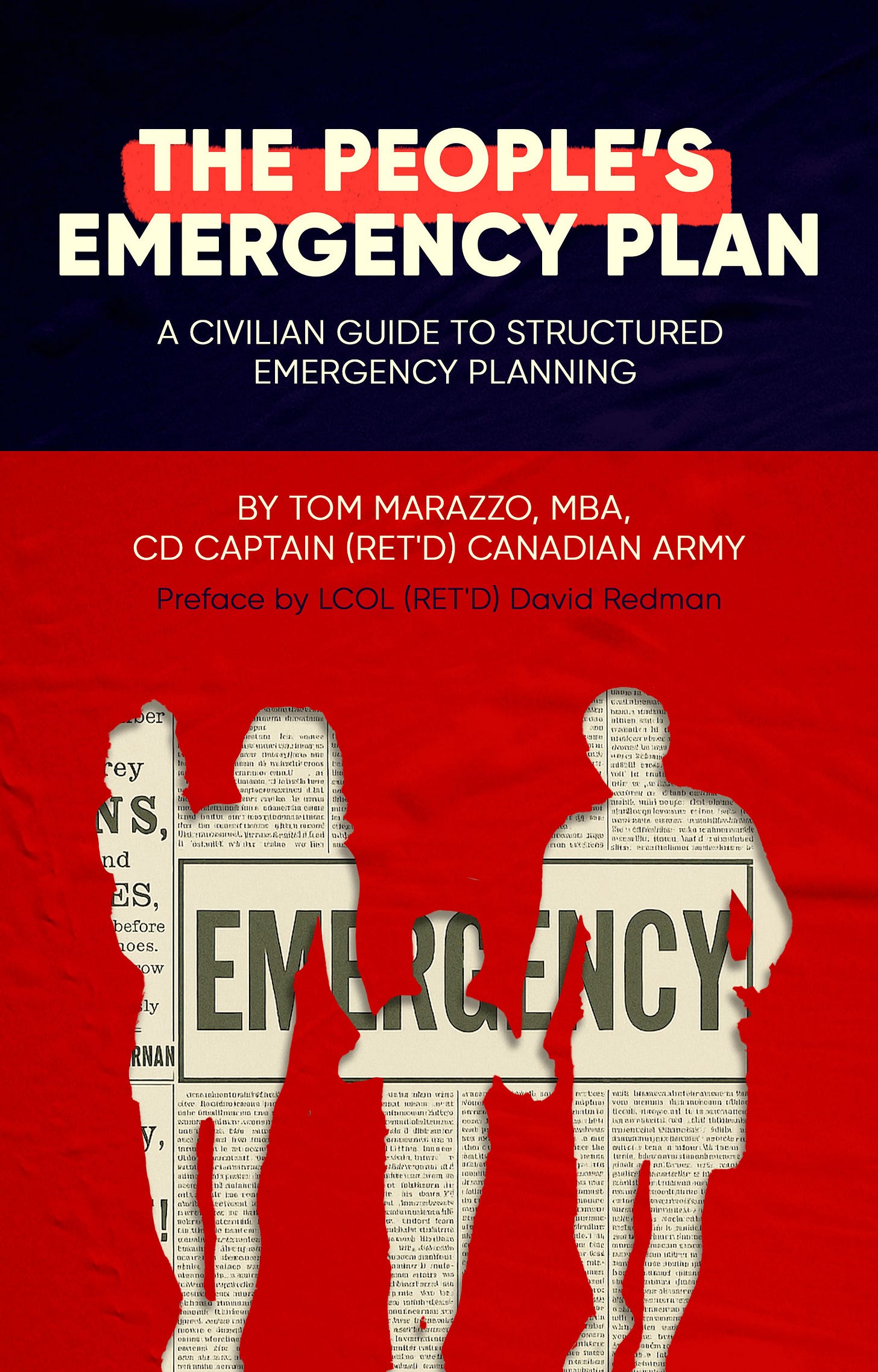ANNOUNCING: The People's Emergency Plan – A Civilian Guide to Structured Emergency Planning
By Tom Marazzo
I’ve spent the last year writing a book that I believe fills a massive gap in how civilians prepare for emergencies.
It’s called The People's Emergency Plan. And I didn’t write it because the world needs another “prepper” guide about stockpiling food or buying the right flashlight. This isn’t that kind of book.
This is a book about planning—real, structured, military-style planning adapted for civilians. It’s based on the Operational Planning Process (OPP), the same framework used by emergency management professionals and military leaders. But this version is civilianized. No jargon. No fluff. Just a clear, step-by-step approach to preparing your home, your family, and your future.
Why This Book?
Most emergency guides teach you what to buy. Very few teach you how to think—and almost none show you how to plan.
This book changes that.
It walks you through a framework rooted in the same military principles I used over 25 years in uniform, adapted to civilian life. Each chapter builds on the last. Each worksheet flows into the next. And by the time you finish the book, you’ll have a fully customized plan that fits your life—not someone else’s scenario.
You’ll learn how to:
Analyze risks in your local environment
Define your goals, constraints, and available resources
Choose between GO, STAY, or PREPARE TO GO strategies
Build decision points and contingency plans that actually work
Reduce fear by having a process that keeps you focused when it matters most
Learning From the Best
One of the major influences on this book is LCol David Redman (Retired)—former head of Emergency Management Alberta and a tireless voice for rational, structured planning. Redman was one of the few who raised alarms about Canada’s abandonment of long-standing pandemic response plans during COVID-19. His work, including the paper Canada’s Deadly Response to COVID-19, laid bare the consequences of fear-based decision-making and government mismanagement.
Redman’s insights reinforce one of the core messages of this book: we cannot wait for the government to get it right. It’s up to us to be ready.
Why I Wrote This
When I helped lead the Freedom Convoy in Ottawa, I wasn’t there to fight—I was there to bring structure and order. People trusted me because they knew I could plan. That experience, combined with my military training, showed me that the same principles that guide soldiers in combat can help families stay safe during emergencies. And now, I’ve turned those principles into a guide that anyone can follow.
This book is not a military manual. It’s a civilian tool for real-world readiness.
Who Is This For?
Parents who want to keep their kids safe
Community leaders who want to build local resilience
Business owners who need continuity under stress
Anyone who’s tired of relying on systems that fail us when it counts
Where I’m At: 85% Done
The manuscript is 85% complete. Right now I’m refining the worksheets—making sure each one flows naturally from the previous chapter and leads the reader toward a complete, customized emergency plan. No re-writing. No guesswork. Just one structured flow from start to finish.
Would You Read This?
If this book sounds like something you’d want on your shelf—or in your hands before the next crisis—I’d love to hear from you.
Leave a comment. Share this post. Let me know what questions you have or what you’d want to see in a final version. Your input at this stage could help shape the final product.
Emergencies don’t wait. But we can prepare.
— Tom





Thank you for using your resources to write this emergency plan so much needed everywhere as we do not know what is coming next. As a senior I am worried about how many people will not be prepared for any kind of emergency.
This is a constructive step, that many many civilians will revere in the future